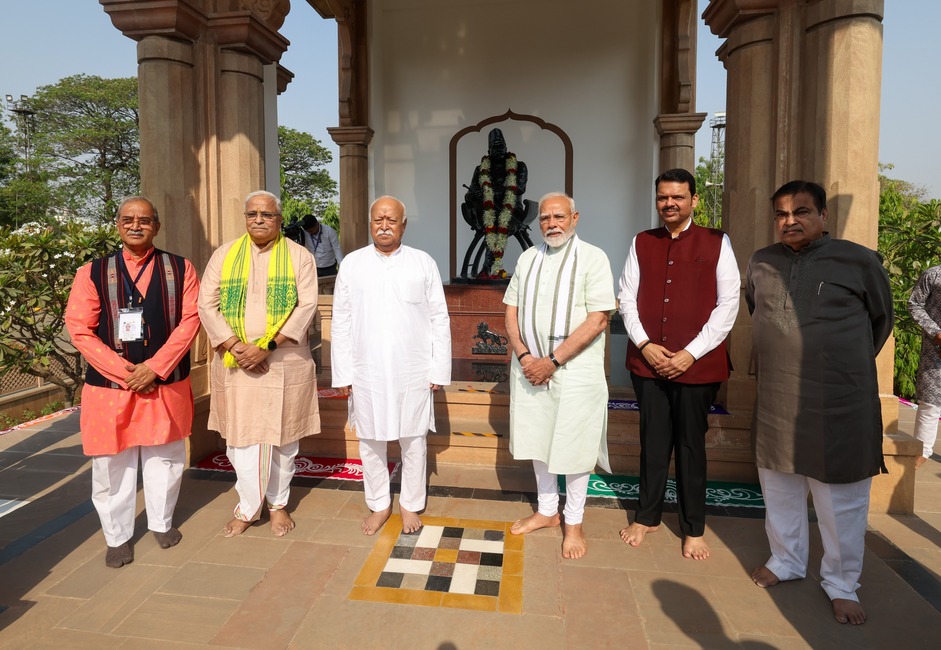
On March 31,2025, when Prime Minister Narendra Modi visited the RSS headquarters in Nagpur, he became the first PM holding office to do so. Modi, a former RSS pracharak, paid tribute to RSS founder Keshav Baliram Hedgewar. Modi was accompanied by (left of Modi) RSS Sarsanghchalak (chief) Mohan Bhagwat and (right of Modi) Maharashtra Chief Minister Devendra Fadnavis and Union transport minister Nitin Gadkari
As the RSS gets ready to mark its 100th anniversary, the world’s largest cultural organisation looks to expand beyond its traditional base by embracing modern systems while retaining its ideological core. It has charted an ambitious course for expanding its footprint across the country, casting itself as a dominant force in determining the future of India
The Rashtriya Swayamsevak Sangh (RSS) completes 100 years on Vijayadashami this year and the centenary celebrations will take place from October 2025 until Vijayadashami 2026. The RSS’ key focus will be further expanding its outreach. Its highest decision-making body, the Akhil Bharatiya Pratinidhi Sabha (ABPS), finalised these expansion plans at its annual meeting in Bengaluru over March 21 23 this year. Since 1925, the growth of the Sangh is seen in its circles as the progressive unfolding of founder Dr Keshav Baliram Hedgewar’s vision.
The RSS has continuously evolved and adapted to contemporary changes in the socio-economic fabric of the country. Its biggest representative symbol—the RSS uniform—has undergone a dramatic change indicative of how the organisation has tried to keep up with the times. The khaki shirt was changed to a white shirt, the khaki cap was replaced with a black one, the long boots gave way to simple black canvas shoes with laces, the leather belt was replaced with a non leather belt, and, last but not least, the most visible and wellknown symbol of the RSS, the khaki shorts, were replaced with brown pants in 2016.
The RSS has more than 4,000 full-time workers. Most of them are post graduates and many have been educated in premier institutes of the country. They are quite tech-savvy. Tablets, laptops, and other devices are being used increasingly to improve efficiency in organisational functioning. In fact, the thousands of shakhas went completely online during the Covid-19 lockdown. Once the restrictions were lifted, the RSS got back with a bang and has been rapidly expanding since. A look at the annual performance report of the organisation for 2024-25 is indicative.
The highlights include:
✹ The RSS has set a target of increasing the number of daily shakhas from around 83,000 to 1 lakh in its centenary year. The number of RSS daily shakhas rose to 83,124 in March 2025, up 10,000 from 73,117 a year ago. Similarly, the number of weekly shakhas increased by about 4,000 at 32,147 during the year.
✹ As part of the Sangh’s expansion and consolidation plan, special programmes will be organised for the youth by prant (regional) units. Similarly, many nation-building and service activities, and panch parivartan programmes will be planned for youth aged 15-30 years by the local units according to need. The panch parivartan programme includes five key points for social transformation, namely, samajik samrasta (social harmony), kutumb prabodhan (strengthening of families and family values), paryavaran (environmental awareness), the insistence on ‘swa’ (selfhood) and the duties of citizens.
✹ A total of 223,000 new swayamsevaks (volunteers) joined the RSS during the past year. Of them, around three-fourths (163,000) are in the age group of 25-40 years, while 20,000 were above 40 years of age. A total of 4,415 introductory sessions known as prarambhik vargas were conducted during the period.
✹ The RSS currently has 10 million swayamsevaks or volunteers. Of these, around six lakh attend daily shakhas. After training in shakha work, they work with different sections of society and also participate in various social service activities.
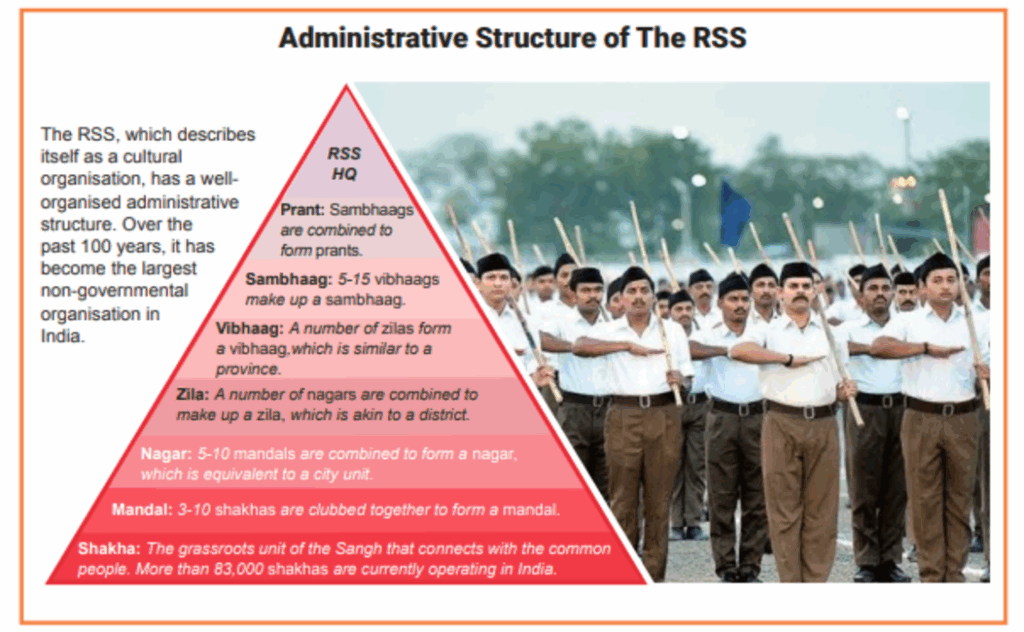
More than 12.7 million people have approached the RSS through the Join RSS website since 2012.
They were integrated into RSS work. Of these, around 46,000 women, having interest in RSS work, were guided to take up various activities related to its ideology. Many were from Arunachal Pradesh, Manipur and even outside India.
✹ Through Seva Bharati, RSS volunteers were involved in 89,706 social service programmes during the past year. These included initiatives in the area of education (40,920), medical assistance (17,461), social awareness (20,546) and self-reliance (10,779). Rural development and cow protection measures were also taken up as part of the activities.
✹ The Karma Yogini Sanghamam programme, aimed at women social workers, organised by Seva Bharati at Kanyakumari (Tamil Nadu) was attended by over 60,000 women involved in Self-Help Group (SHG) activities.
✹ Special attention was paid to samrasta (social harmony). Swayamsevaks worked in 1,084 locations to eliminate social evils, including issues related to drinking water and temple entry, through various programmes. The Sangh identified 1,084 locations where efforts were made to eradicate wrong social practices.
✹ Rural mandals (blocks) were a special focus of the expansion and consolidation exercise. The number of daily and weekly shakhas in the rural areas went up by 3,050 to reach 58,981 in the past year. With special focus on rural mandals, the RSS has expanded its outreach significantly. There are currently 58,981 rural mandals, with 30,770 daily shakhas— an increase of 3,050 from the previous year.
Additionally, there are 9,200 weekly shakhas, bringing the total number of activities in rural areas to 39,970.
✹ As many as 2,453 swayamsevaks joined as vistaraks (full-time workers for a short duration) for two years to expand and strengthen RSS work.
Four Core Principles of the RSS
However, even as the RSS continues to expand, it is important to understand some of the core issues around which the RSS works, although they are not spelled out exclusively, as there is no single book of ideology that the RSS adheres to. These principles, which guide the organisation’s functioning, can help one understand the objective of the RSS, how it works, and why there have never been any succession issues, unlike most other organisations, in 100 years. These principles have also ensured that the RSS became the largest voluntary organisation in the world against all odds; and despite not having any formal membership process, millions of its cadres continue to be disciplined and highly motivated to work selflessly for society.
The first core principle of the RSS is that its objective is to organise society and transform it in such a way that every member of society can realise his or her potential in a holistic manner. Thus, the RSS has positioned itself not as an organisation within society, but as a force multiplier that helps society to organise itself.
The second core principle, deduced from the above-mentioned one, is that when society is completely transformed and the RSS’ objective has been achieved, it need not receive any credit because it is the society that has transformed itself. Because of this principle, the RSS stays away from publicity. An interesting fact about the RSS is that its publicity wing (prachar vibhag) came into existence in the mid-1980s, almost six decades after its inception. The scope of activities of the RSS’ publicity wing has been defined in such a way that it is focused on promoting nationalist ideas, rather than the organisation’s achievements or activities.
The third core principle of the RSS is that there are two kinds of people in society: those who have joined the RSS and those who are ultimately going to join it. Senior RSS functionaries have repeatedly said in their internal meetings, as well as on public platforms, that if someone is critical of the RSS, it needs to work harder to reach out to such critics and make them understand what the RSS is all about. That is why, despite being targeted through false narratives by several political leaders, intellectuals, and public personalities, the RSS doesn’t respond with counter-arguments. It believes that, ultimately, its bitter critics will come to its fold. This has happened in the past with several RSS detractors later joining the organisation and working for it relentlessly.
To give an example, Prof. M.G. Bokare, a wellknown economist, who later became the vice-chancellor of Nagpur University, was a frontline ideologue of the Left parties. However, his friendship with RSS ideologue and stalwart Dattopant Thengadi led to an exchange of ideas. Thengadi convinced Bokare to study the tradition of economics in ancient Indian scriptures. The outcome was Hindu Economics, a seminal work by Bokare, published in 1993. Interestingly, he also became the first national convener of the Swadeshi Jagaran Manch (SJM), an RSS-inspired organisation that works in the field of public policy, especially on economic issues.
The fourth core principle of the RSS is that its prime instrument of working in society will always be its daily shakha. This uniquely devised system organises gatherings of its volunteers at the local level every day at a fixed time and location. The gathering lasts for an hour and there are more than 70,000 shakhas across the country.
The RSS sees its shakha as a character-building mechanism. Volunteers, who often join as children or adolescents, are trained every day to think about ‘nation and society’ first.
More than 12.7 million people have approached the RSS through the Join RSS website since 2012. They were integrated into RSS work. Of these, around 46,000 are women, who are interested in the RSS’ work
As the RSS continues to expand, it is important to understand some of the core issues around which the RSS works. They are not spelled out exclusively, as there is no single book of ideology that the RSS adheres to
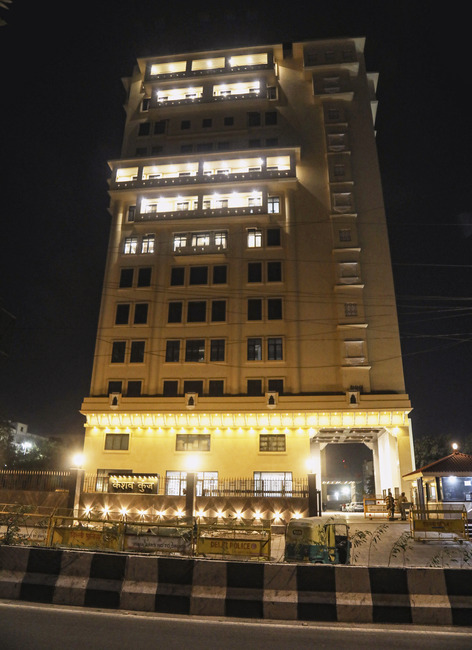
On February 19, 2025, RSS chief Mohan Bhagwat inaugurated the new RSS complex, spread over five lakh square feet, located at Jhandewalan Extension in Delhi
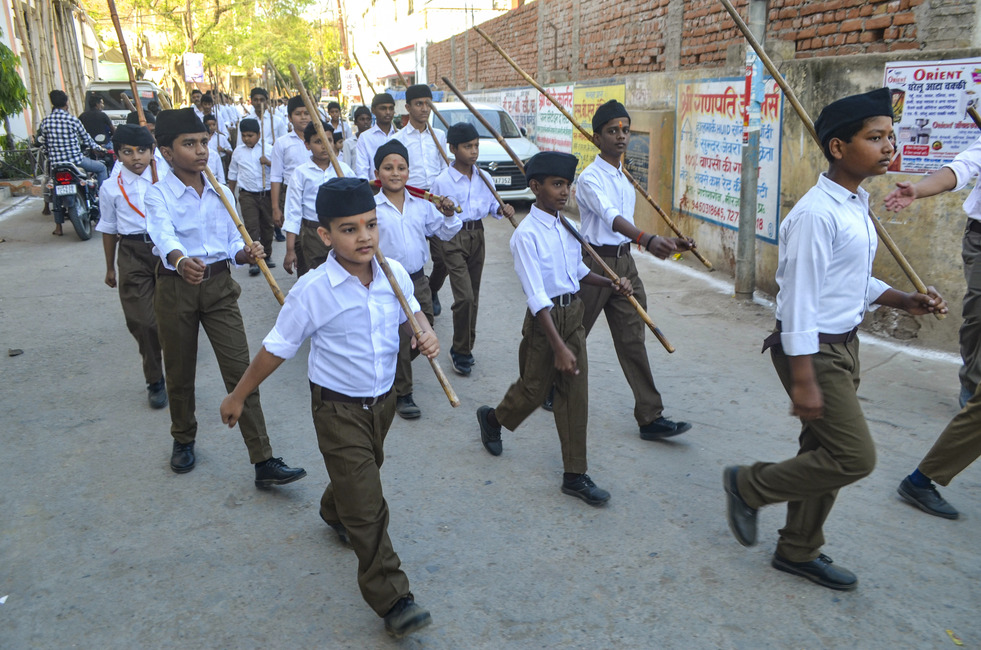
The RSS believes that getting more younger people into its shakha system will help in character building of the nation
The RSS sees its shakha as a character-building mechanism. Volunteers, who often join as children or adolescents, are trained every day to think about ‘nation and society’ first
As they become adults, many of them move on to do social work in their fields of choice, while a significant section remains within the organisation to strengthen and expand its outreach. Those who move out either set up organisations or join organisations set up by RSS volunteers in their respective areas of interest. The RSS mentors these organisations and the volunteers who have moved into different fields. This is how more than three dozen national organisations have come into existence, creating a huge impact in almost every field, from education to tribal welfare. Some well-known organisations set up and driven by volunteers who emerged from the RSS’ shakha system include the Akhil Bharatiya Vidyarthi Parishad, Sewa Bharati, Vanvasi Kalyan Ashram, Bharatiya Mazdoor Sangh, Vidya Bharati, Vishwa Hindu Parishad, and Pragya Pravah, to name a few. The plan for the centenary celebrations of the RSS will be woven around these core principles, with a key focus on expanding and strengthening the shakhas the time-tested instrument that has remained unchanged for the organisation ever since its inception in 1925.
What does RSS mean by One Nation, One Culture?
The concept of One Nation, One Culture has been a steadfast position adopted by the RSS since its inception. The RSS’ critics have often termed this conceptual framework an attempt to impose Hindu hegemony without understanding the way the RSS views the concept of culture and nation.
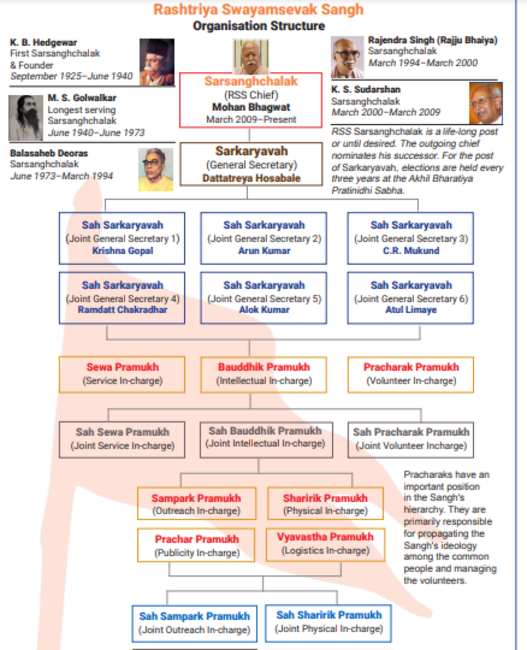
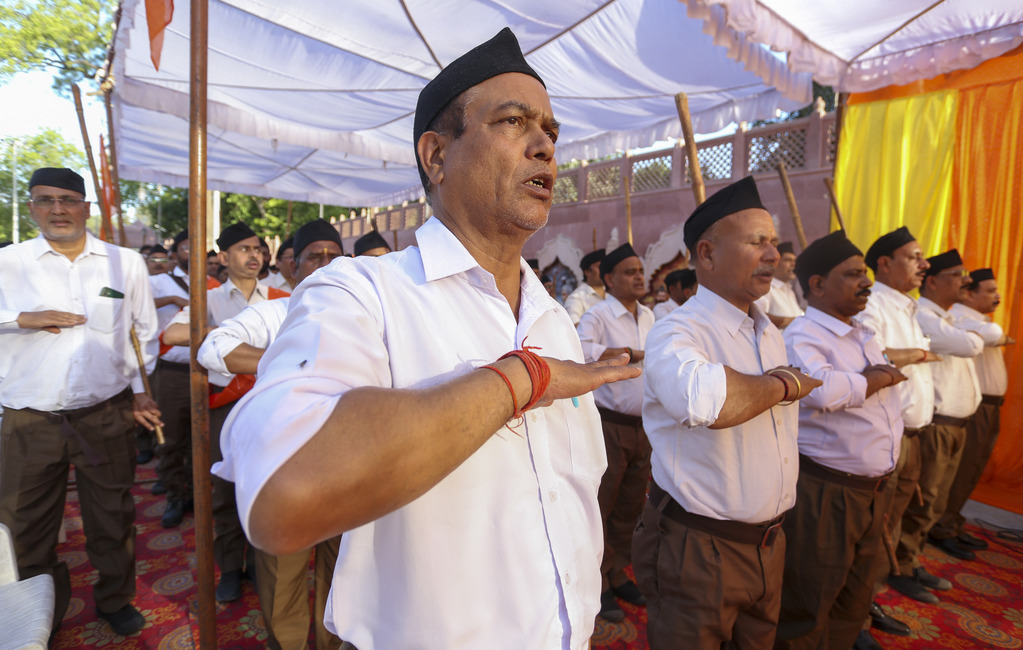
The Sangh wants to expand its shakha network across India as part of its centenary celebration
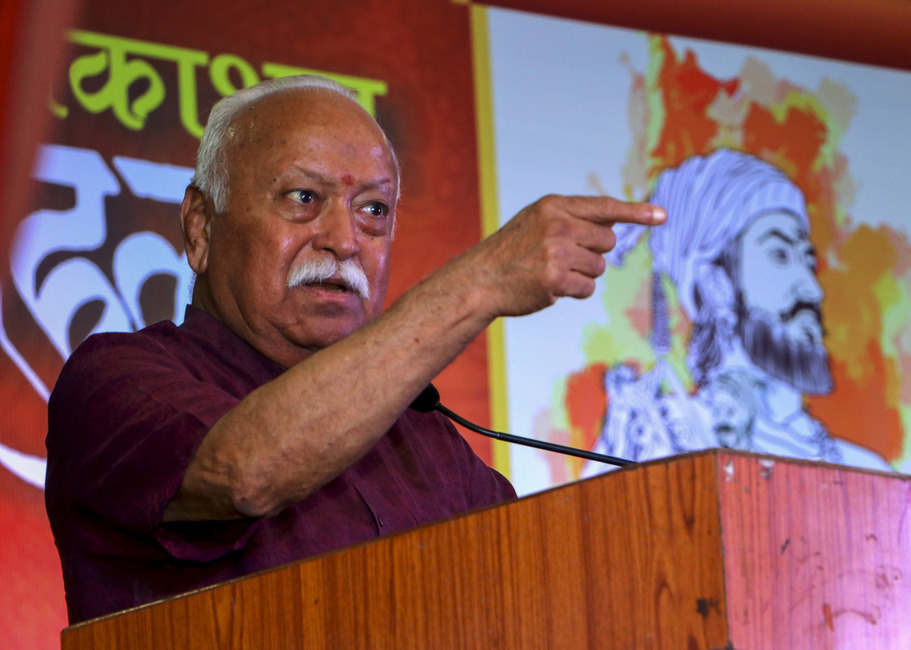
In recent times, Bhagwat has outlined the RSS’ vision of establishing a stronger presence in northeast India
In the ancient Indian texts, patriotism was well defined, and termed Daishik Shastra (Science of Patriotism)—the branch of knowledge pertaining to study of the nation
In the second half of the 20th century, Deendayal Upadhyaya, an RSS ideologue who propounded the philosophy of Integral Humanism, defined the concept of Hindu nationalism in a series of lectures delivered in April 1965. His thoughts have influenced the contemporary framework of Hindu nationalism to a great extent. A multi-volume series titled Deendayal Upadhyaya: Ideology and Perception was published in 1988, which details different aspects of patriotism and national consciousness in the context of Hindu Rashtra and Hindu nationalism.
C.P. Bhishikar dwells upon these aspects in the fifth volume of the series.Elaborating on Upadhyaya’s conceptual framework, Bhishikar explains, “An integrated society has been living as one nation in Hindustan the ancient land of ours for thousands of years. Page after page of our history records events showing this nationalist feeling. Right from the Vedas, the word Rashtra is profusely in use. In the Shri Sukta or Shri Lakshmi Strota, which is regularly recited by lakhs of Hindus, there is an invocation to the Goddess Lakshmi, which contains the line (in Sanskrit), pradurbhuto surashtreasmin keertinridhim dadatu (since I was born in this excellent Rashtra, may glory and prosperity come to me).
“There is pride in this and also devotion to the Motherland. Has not some deep thinking gone behind this national life, its fundamental principle, the direction of the incentives and motivations behind all actions of individuals and society, duties and taboos, the rise and fall of society, the happiness and misery of the society and individuals here during thousands of years? Was it from the British that we learned patriotism? Or have our predecessors thought about the inspiring strength of patriotism? If so, what is that thought? Is it in harmony with modern times?”
Upadhyaya had deliberated on these problems and provided answers to these questions. According to Upadhyaya’s explanation, as analysed by Bhishikar, it will have to be accepted that there is a common theme behind all the thinking in this sphere across India. It became identified with Hindu spiritual thought. Hindu philosophers have time and again used the metaphor of the human body.
The human body is concretely visible to everyone; but no one presumes that the body is the complete man. What is that light, or impetus, which enables our organs of cognition and organs of action to execute their respective functions? The Hindu philosophers have looked upon the spirit or the soul as the invisible, changeless and continuous force behind all these activities. A living body is inconceivable without a soul, this soul-force sustains the life-force, in the absence of which the body is rendered lifeless and destroyed. The same is true of a nation.
In the ancient Indian texts, patriotism was well defined, and termed Daishik Shastra (Science of Patriotism)—the branch of knowledge pertaining to study of the nation. According to Bhishikar, this is a word which is now obsolete, but which literally means the science which deals with protection of the nation. Patriotism, in the context of Hindu nationalism, is just another connotation of Daishik Shastra. It appears that Indians thought about this life-force of the nation in the most scientific manner.
Upadhyaya, in his treatise on the concept of nation, talks in detail about the inherent national spirit that is at the core of Hindu nationalism. Bhishikar explains, “According to our Daishik Shastra, there is a vital element that gives nationhood to the people living in our territory, having the same language and the way of living, common triumphs and defeats, common friend-foe relationship and all other common aspects. This invisible vital element has been named as chiti by our scholars in this branch of study. Pandit Deendayal Upadhyaya appears to have used the same scientific term in his theories about nationhood.”
To put it simply, chiti is the national spirit or the natural character of the nation. The writers of Daishik Shastra are of the opinion that a nation cannot be simply created artificially, while a state can be so created. After World War II, a number of such states appear to have been formed. Quite a few institutions, large and small, can also be artificially formed. Man can create systems, but a nation is born with a chiti. The existence of the chiti, its radical spirit, is the same as the existence of the nation. When this inner consciousness of identity or chiti is weakened, the nation becomes weak and with the destruction of chiti, the nation loses its existence; its flowering is the nation’s flowering. Chiti is the raison d’etre of a nation. The nation experiences supreme happiness if its multi faceted life follows this life-purpose.


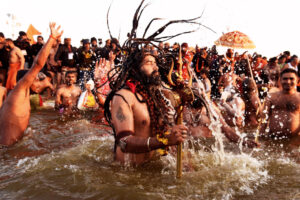

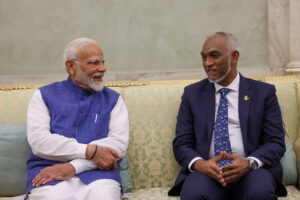
Add Comment